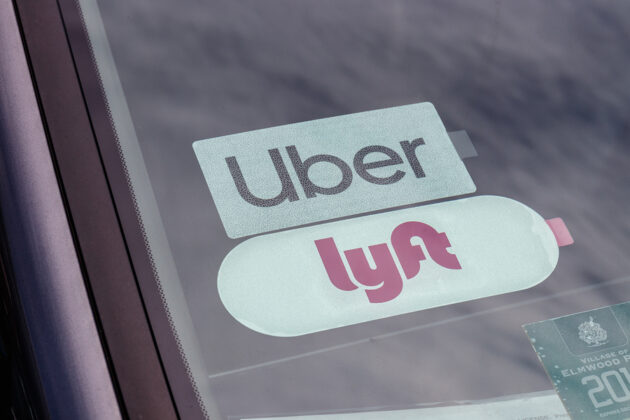
Prices on Uber and Lyft rose to as much as five times normal rates in the immediate aftermath of a deadly shooting in downtown Seattle on Wednesday evening.
The automated "surge pricing," which kicks in during periods of high demand, lasted for about an hour and drew widespread criticism before the companies manually reset prices to normal levels.
This is not an uncommon occurrence after shootings and other emergencies around the world. The ride-hailing companies have taken steps to speed up their manual override systems to end surge pricing in such situations, but the Seattle shooting shows that there is still a significant lag in that process.
A Lyft ride from downtown Seattle to the Wallingford neighborhood, for example, cost more than $100 after the shooting, according to a screenshot posted on Twitter.
Cool surge pricing after mass shooting in Seattle @lyft pic.twitter.com/oYIlrsI4fJ
— Jeff Landset (@JeffLandset) January 23, 2020
The shooting occurred around 5 p.m. PT outside a McDonald's and left one person dead and seven others wounded.
Users saw ride prices skyrocket on both Uber and Lyft after the shooting.
Good old @Uber, always ready to profit out of a tragedy. #seattleshooting pic.twitter.com/xjRDXUVSuU
— Jason Wiltshire (@JasonWiltshire) January 23, 2020
You bet! This is a ride that is maybe 20-30 minutes and is usually about $35. How is this okay?? pic.twitter.com/ehLkefh5Hb
— hannah (@han_herbert) January 23, 2020
An Uber spokesperson told GeekWire that Uber turned off surge pricing around 6 p.m. PT for an area spanning around a one-mile radius from the incident. We've reached out to Lyft for comment.
For those in downtown Seattle who got stuck near the area of the shooting like me, Uber and Lyft fixed their surge pricing mistake and are charging normal prices again. pic.twitter.com/5v4IPu3CCO
— jenn⁷ (@gachibam) January 23, 2020
Uber revamped its emergency protocols in September 2018, following criticism over its handling of surge pricing in the aftermath of terrorist attacks in cities including London and New York City. The company appointed its Global Security Center to assess situations and cap trip pricing in a given area.
"We will review situations where unintended charges might have occurred during an emergency and work to refund them," Uber wrote in 2018. "Customers can always report issues through the app."
Determining how to cap surge pricing during an emergency can be a tricky decision. Uber and Lyft use surge pricing to incentivize more drivers to get on the road and meet demand, but it also may be problematic to encourage drivers to enter a dangerous area.
Google Maps shows shooting on app
Much to the surprise of some users, Google notified people of the shooting via its Maps app.
Holy fuck, Google maps now tells you where the latest shooting is #seattleshooting pic.twitter.com/yyb76AAhoh
— chelsey waters (@chelseywaters) January 23, 2020
Hasn't seen this before. pic.twitter.com/qGONl0QCHx
— Manuel Valdes (@ByManuelValdes) January 23, 2020
Search Engine Journal and CNET noted the feature in 2018 after a shooting at YouTube's headquarters.
We've reached out to Google for more information.
Evidence collection
Seattle police are asking citizens with information about the shooting to call the SPD tip line at 206-233-5000. They are also using an online portal to collect evidence.
Do you have photo or video evidence of the 3rd and Pine shooting? Share it with our detectives directly by visiting this link: https://t.co/vLdZyw20OR
— Seattle Police Dept. (@SeattlePD) January 23, 2020
The portal is powered by Axon Evidence. Axon is best known for its police body cameras. The company is headquartered in Scottsdale, Ariz., but has a large office in Seattle.
via https://ift.tt/2TRhXnY

No comments:
Post a Comment